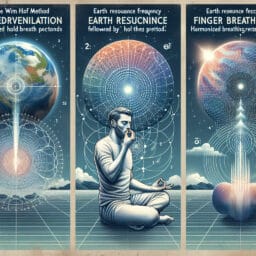
Our Top 5 Meditation Tools
Introduction
There are tons of different tools that you can use to improve your meditative practice. Be careful, some people will swear by one method or technique while others will pooh-pooh it. Your meditative practice is just that: Yours. Continuously experiment and learn how you feel using different meditative practices, then pick what’s right for you. There’s no right or wrong answer here. If you’re just starting out, or you’re an experienced practitioner, we’ve compiled a few of our favorite meditation tools.
1. Breath Awareness
Ubiquitous in meditation and NSDR, breath work is one of the most common methods of focusing the mind. Luckily enough your breath is always with you, all you have to do is simply be aware of the sensations it produces in your body. Breath awareness is an excellent method of returning to focus when we’ve found our minds off on a tangent. All you have to do is remember the breath, and return it to focus. If you find yourself losing the breath too often, sometimes it’s helpful to count silently to yourself. It’s important to strike a balance between effortful focus and effortless seeing. And always remember that judging the effectiveness of your meditative practice is simply another thought in consciousness.
2. Guided Meditation
Guided meditation is the gateway drug of meditative practices! Following along with guided audio is often the best way to get started if you’re not entirely sure what to expect with meditation. However, even if you’re an experienced practitioner don’t overlook this method! Sometimes following along with a different guide, using different methods is an excellent way to gain insight into how your own mind works. Guided meditations do an excellent job of relaxing the mind and the body.
3. Body Scanning
Body scanning is a great way to become more aware of your body. We often forget the world of physical sensations that our body is experiencing at every moment. Body scanning allows us to take those sensations as the object of meditation and experience those feelings to the fullest. To perform a body scan, sit or lay down in a comfortable position. Begin at the feet, and focus on the sensations in every part of your body, starting at the toes and rising all the way to the crown. Don’t move fast, and don’t forget the often ignored parts of the body like the back of your head or the backs of your arms. It’s easy to forget that there is indeed sensation there as well!
4. Mindful Movement
Mindful movement can be practiced in tons of different ways, including simply walking mindfully! Mindful walking can be as simple as being aware of the movements of walking. Feeling the air around your arms as they swing, feeling the ground beneath your feet. Yoga is also an excellent example of mindful movement. Your yogic practice can become as meditative as you want it to be. Exploring the nature of the mind using movement as the object of meditative attention is an excellent way to become familiar with how the mind works.
5. Mantra Meditation
Mantra meditation is perhaps one of the oldest and most widespread forms of meditation. A mantra is a word, phrase, or sound that the practitioner repeats either out loud or silently. The mantras chosen can be anywhere from an affirmative sentence like ‘I am enough’, sounds like the ‘Om’ or even biblical scriptures such as ‘The Lord Is My Shepherd’.
Conclusion
As a practitioner, think of these as tools in a toolbox that all accomplish the same goal. There’s no right or wrong answer to which tool you choose, but maybe it’s best to experiment and find out which tool you like the most! There’s also plenty of methods and techniques that we haven’t discussed here, so be sure to explore and find which ones work for you the best.



